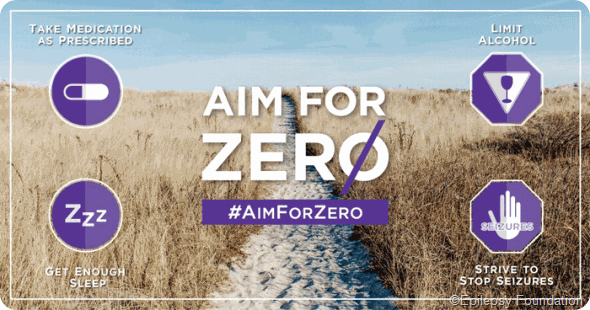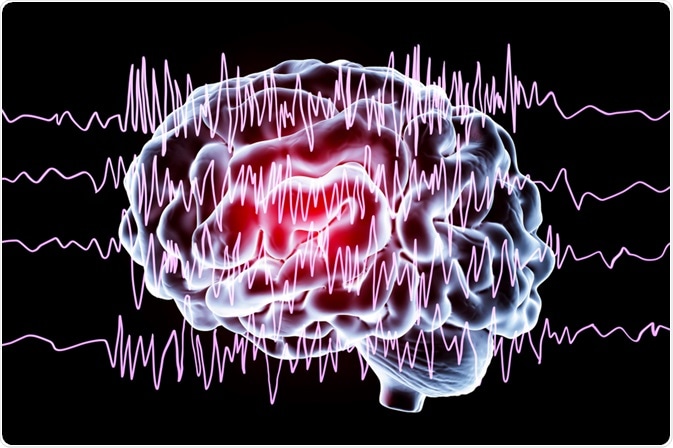Sudden Unexpected Death in Epilepsy (SUDEP)
 By Keynote ContributorDr. Orrin DevinskyProfessor of Neurology, Neurosurgery and
By Keynote ContributorDr. Orrin DevinskyProfessor of Neurology, Neurosurgery andPsychiatry at the NYU School of Medicine
By Orrin Devinsky, MD
Today, approximately 3 million people in the United States are living with epilepsy, a condition that is characterized by two unprovoked seizures or one unprovoked seizure with the likelihood of more. While most successfully control their seizures with drug therapy, at least 3 out of 10 people with epilepsy continue to experience seizures.[i]
The consequences of uncontrolled seizures can be serious, and in the most severe cases can lead to an outcome that, tragically, is often not discussed: Sudden Unexpected Death in Epilepsy, or SUDEP.
The leading epilepsy-related cause of death, SUDEP is said to occur when an otherwise healthy person with epilepsy dies unexpectedly. It strikes an estimated 1 in 1,000 adults in the U.S. with epilepsy each year, but among those with uncontrolled tonic-clonic (grand mal) seizures. the risk increases to 1 in 150. [ii]
What this means for people with epilepsy is that even one uncontrolled seizure could possibly lead to SUDEP. Unfortunately, too few patients are aware of SUDEP, which may lead some to accept continued seizures rather than working with their doctors to try and achieve seizure control.
We now know that these conversations are not taking place: in a new Epilepsy Foundation survey of more than 1,000 epilepsy patients and caregivers, only 18 percent of patients and 27 percent of caregivers reported that they’ve had a discussion about SUDEP with a healthcare provider.[iii]
To help drive discussion of SUDEP, the Epilepsy Foundation’s SUDEP Institute recently issued a special expert consensus report, #AimForZero: Striving Toward a Future Free from Sudden Unexpected Death in Epilepsy. The new epilepsy.com report urges people with epilepsy to strive for their best possible seizure control to reduce their risk of SUDEP, to speak with their physicians about SUDEP, and to use the #AimForZero hashtag when discussing SUDEP on social media.

Epilepsy Foundation’s four key steps to reducing risk of SUDEP
Given the link between uncontrolled seizures and SUDEP, strategies to help achieve seizure freedom can help prevent SUDEP in people with epilepsy. The #AimForZero report, therefore, recommends four key actions that people with epilepsy can take to reduce their risk of seizures: take epilepsy medication as prescribed; get enough sleep; limit alcohol; and strive to stop seizures.
People who live with epilepsy, or who help care for someone with epilepsy, should be aware of the importance of these four steps, and how they can help protect against SUDEP:
- Taking epilepsy medications as prescribed is critical because these medicines are only effective when taken regularly. The brain needs a constant supply of seizure medicine to continue to stop and prevent seizures. When doses are missed or the medicine is taken irregularly, the level of medicine in the body decreases. Changing levels increases the risk of more seizures.
- Getting enough sleep helps patients avoid sleep deprivation, which can trigger seizures. The recommended amount of sleep for children is 10 to 12 hours per day, for teenagers 9 to 10 hours, and for adults 7 to 8 hours. If people with epilepsy are not getting the recommended amount of sleep, do not wake up feeling rested, or do not have the energy for their daily activities, they should work with their healthcare provider to find ways to ensure they are getting enough sleep.
- Lowering consumption of alcohol is important because the tolerance for alcohol can be lowered by seizure medicines and there is a higher risk of seizures after drinking alcohol. Anyone with epilepsy is at a higher risk of seizures after drinking three or more alcoholic beverages. While survey results show that only 2 out of 5 people with epilepsy avoid alcohol.[iv]
- Finally, striving to stop seizures motivates people with epilepsy and their caregivers to strive for zero seizures and talk to their healthcare providers about the risk of continued seizures and SUDEP. Regardless of one’s current level of seizure control, there are many proactive steps people with epilepsy can take once they have committed to exploring all options to stop seizures. These range from identifying and tracking seizure triggers to exploring epilepsy surgery or devices with an epilepsy specialist, to participating in clinical studies to accelerate new therapy development.
 Image Credit: Kateryna Kon / Shutterstock.com
Image Credit: Kateryna Kon / Shutterstock.com
The critical role of communication
Educational initiatives like #AimForZero can help raise awareness of SUDEP, but doctor-patient discussions during regular visits are immeasurably important opportunities to discuss SUDEP, and, as noted, these conversations are not happening enough. The fact is, healthcare professionals are often reluctant to discuss SUDEP because patients and patients’ families may not be receptive to discussing the possibility of death from epilepsy. According to the Epilepsy Foundation’s survey, however, 40 percent of patients – and nearly half of caregivers – said that learning more about SUDEP could make a difference in how they approach seizure control.
Healthcare professionals, patients and caregivers must all be part of the effort to raise awareness about the risks of having seizures and help people living with epilepsy take action to reduce these risks.
To learn more about SUDEP and spread the word about SUDEP prevention, visit epilepsy.com/AimForZero.
About Orrin Devinsky, MD
Dr. Orrin Devinsky is Professor of Neurology, Neurosurgery, and Psychiatry at the NYU School of Medicine. He received his B.S. and M.S. from Yale University, M.D. from Harvard Medical School and interned at Boston’s Beth Israel Hospital. He completed neurology training at the New York Hospital-Cornell Medical Center and his epilepsy fellowship at the NIH.
His epilepsy research includes translational therapies, SUDEP, healthful behavioral changes, phenome-genome correlations, autism, neural markers and imaging, therapeutic electrical stimulation, quality-of-life, cognitive and behavioral issues, and surgical therapy. He is a Principal Investigator for the NIH Center for SUDEP Research and the Principal Investigator for the North American SUDEP Registry and on the Executive Committee of the SUDEP Institute.
He serves as the lead investigator for the cannabidiol trials in Dravet and Lennox Gastaut Syndromes. He has served as a Board member of both for the Epilepsy Foundation and American Epilepsy Society. He founded Finding A Cure for Epilepsy and Seizures (FACES) and co-founded the Epilepsy Therapy Project and epilepsy.com. Outside interests include behavioral neurology, evolutionary biology and history of neuroscience.
[i] National Institute of Neurological Disorders and Stroke. The Epilepsies and Seizures: Hope Through Research. Available at http://www.ninds.nih.gov/disorders/epilepsy/detail_epilepsy.htm.
[ii] Tomson T, Nashef L, Ryvlin P. Sudden unexpected death in epilepsy: current knowledge and future directions. Lancet Neurol. 2008;7(11):1021-31.
[iii] Epilepsy.com survey of people with epilepsy and caregivers. 2016.
[iV] Epilepsy.com survey of people with epilepsy and caregivers. 2016.
Disclaimer: This article has not been subjected to peer review and is presented as the personal views of a qualified expert in the subject in accordance with the general terms and condition of use of the News-Medical.Net website.
Further Reading
- All Epilepsy Content
- What is Epilepsy?
- Epilepsy Classification
- Epilepsy Epidemiology
- Epilepsy Pathophysiology
Last Updated: Jan 25, 2021
Source: Read Full Article



